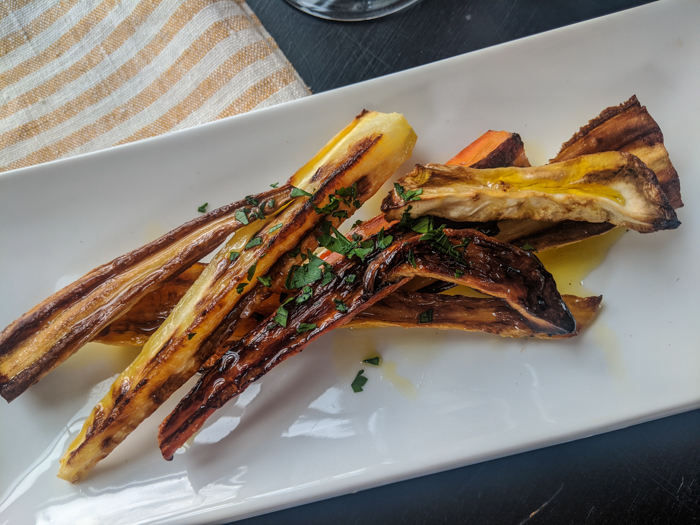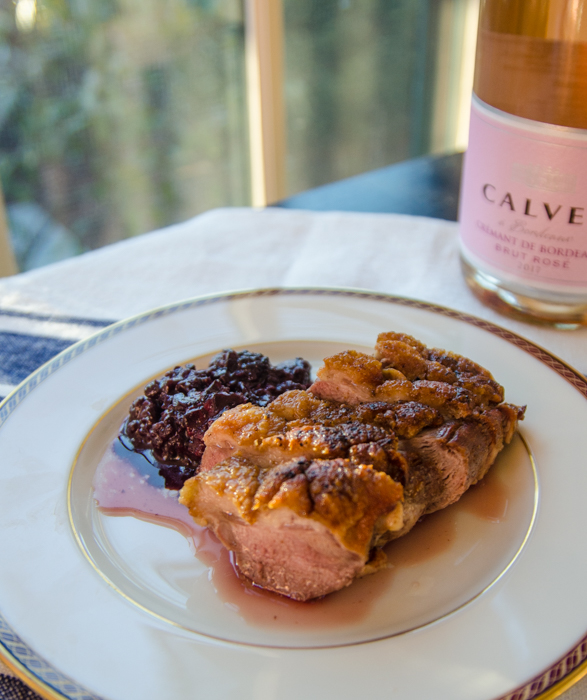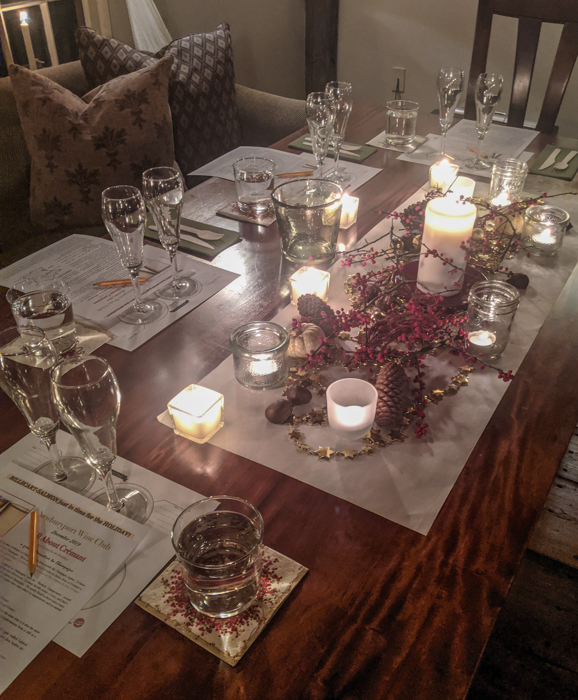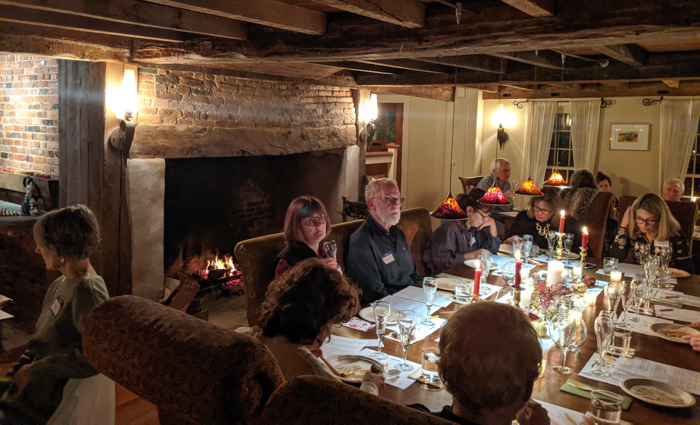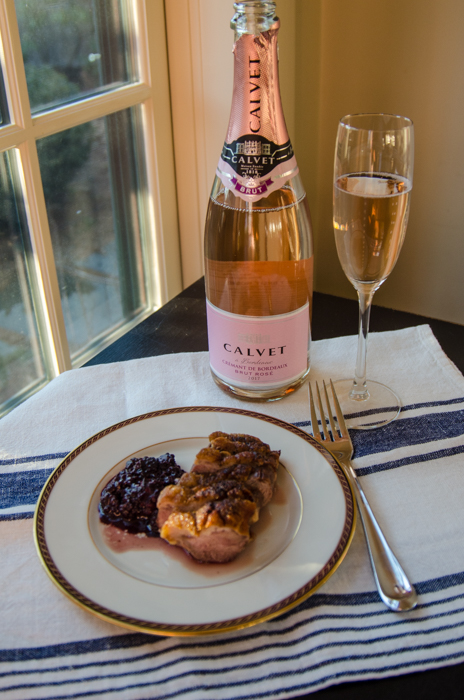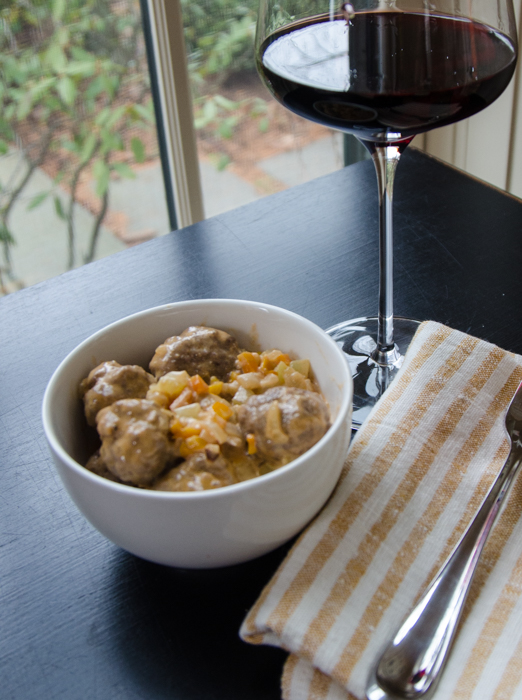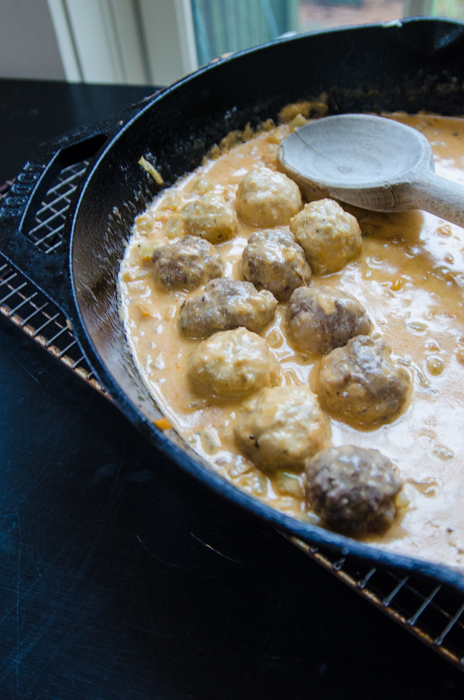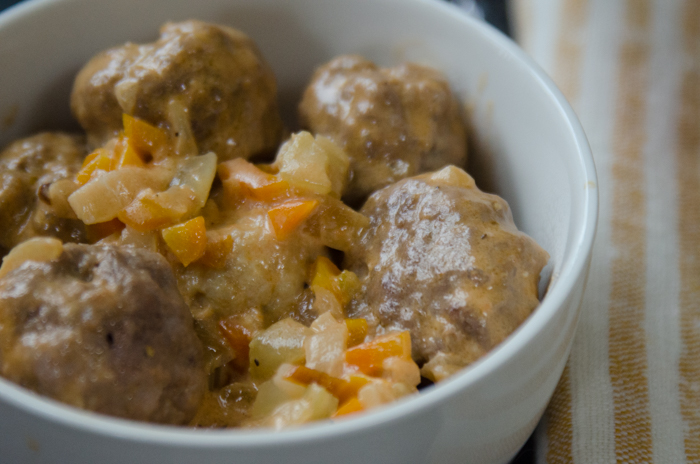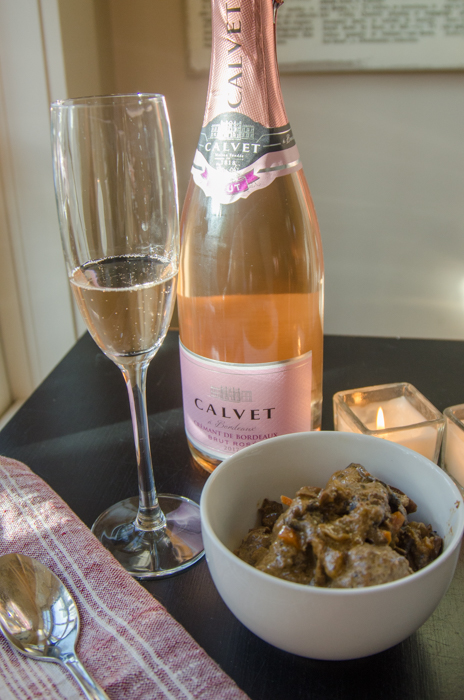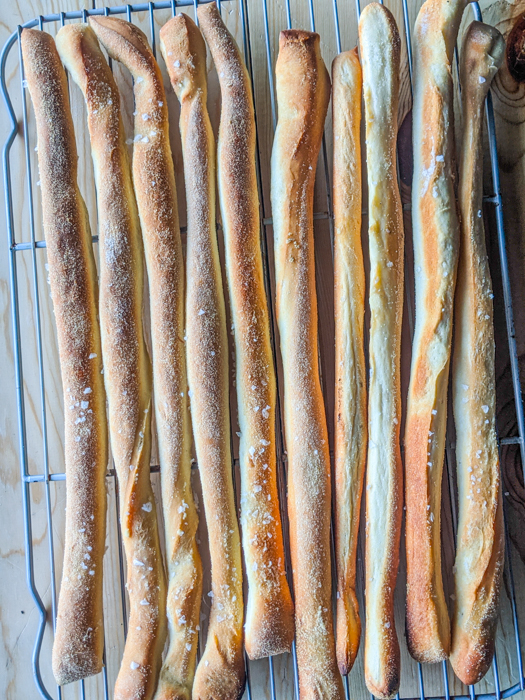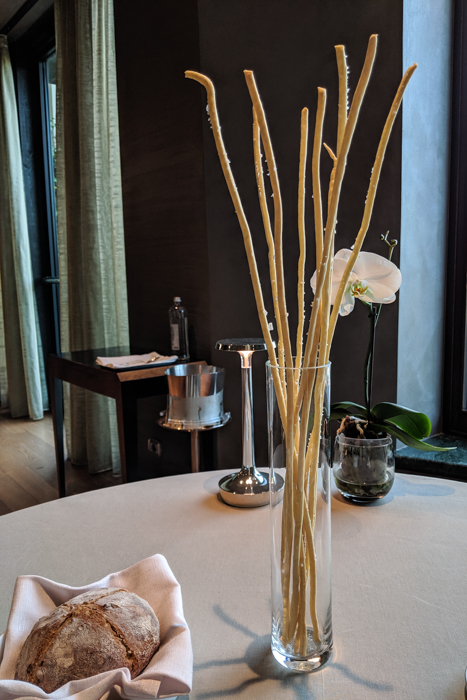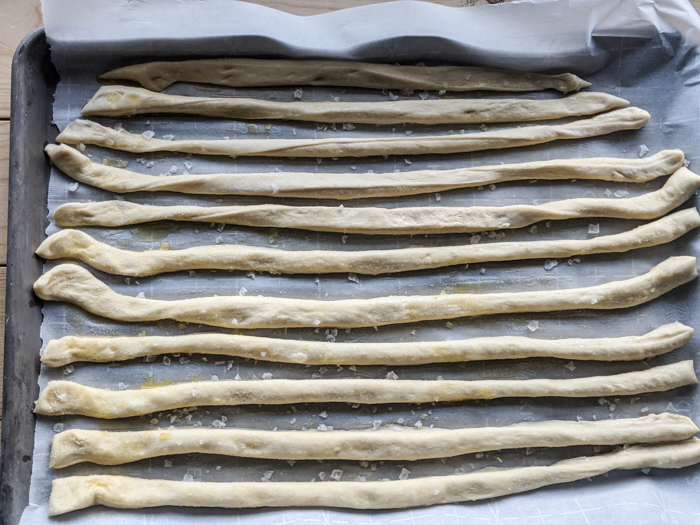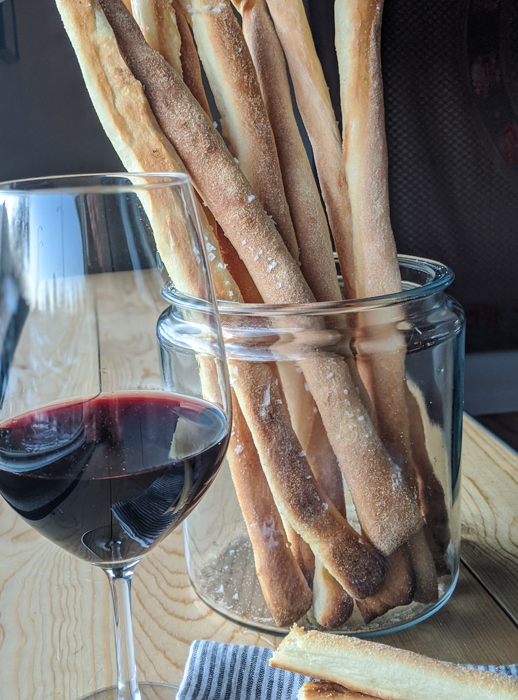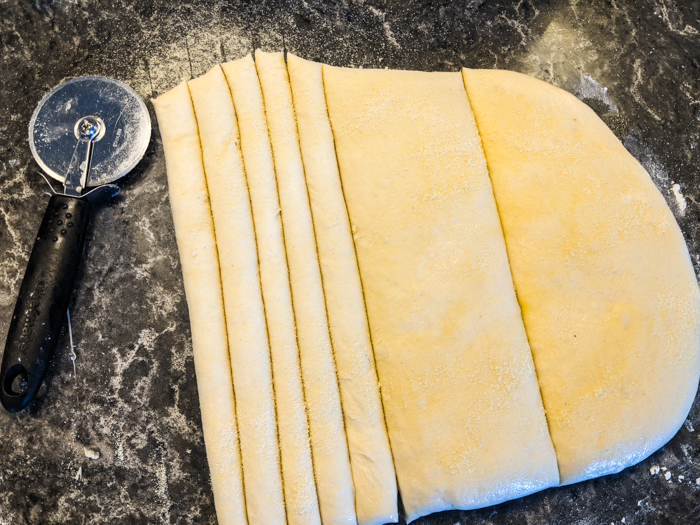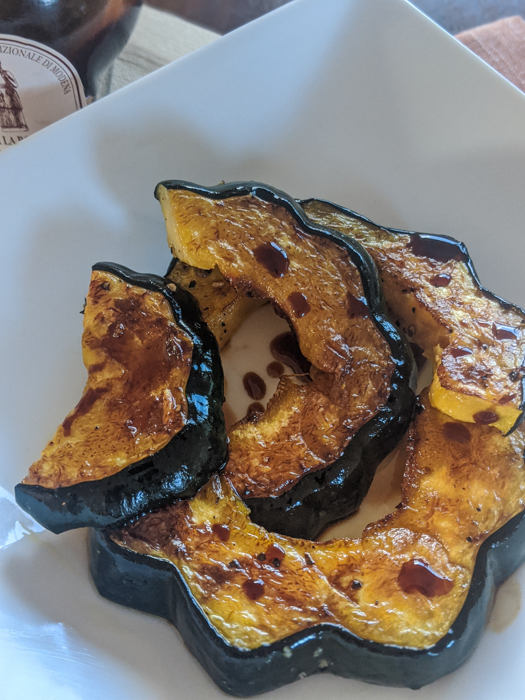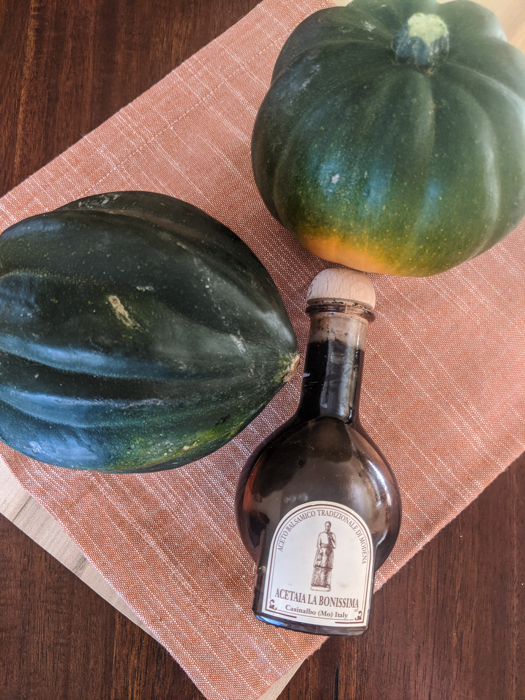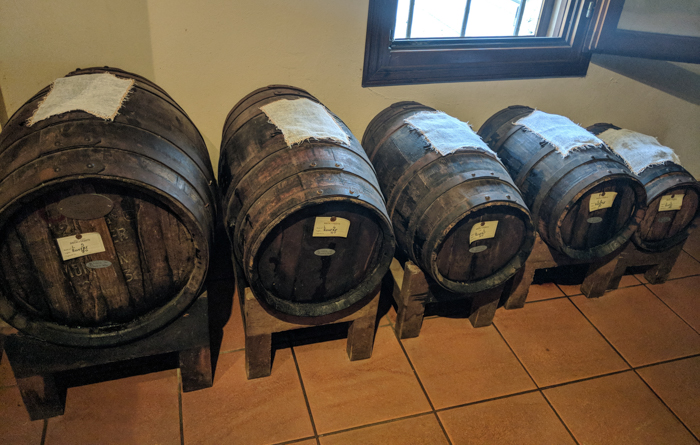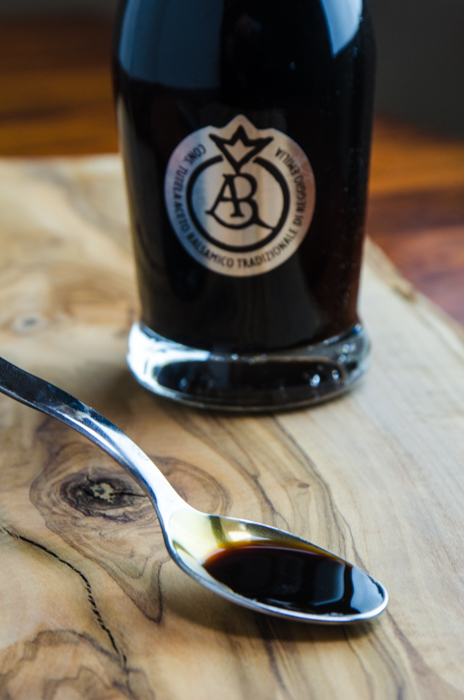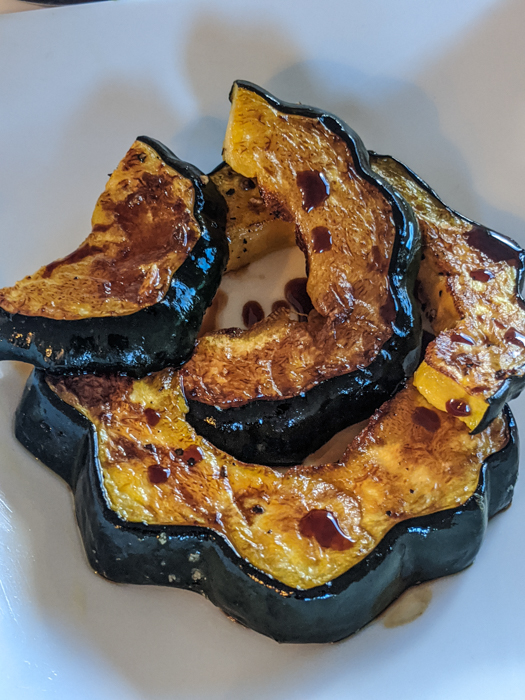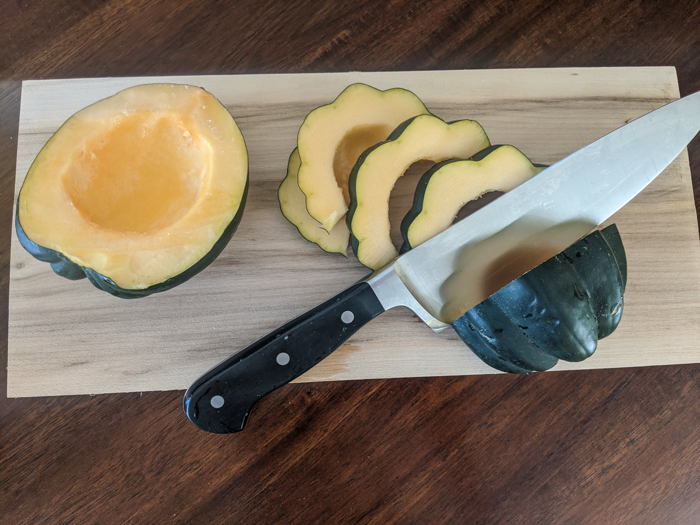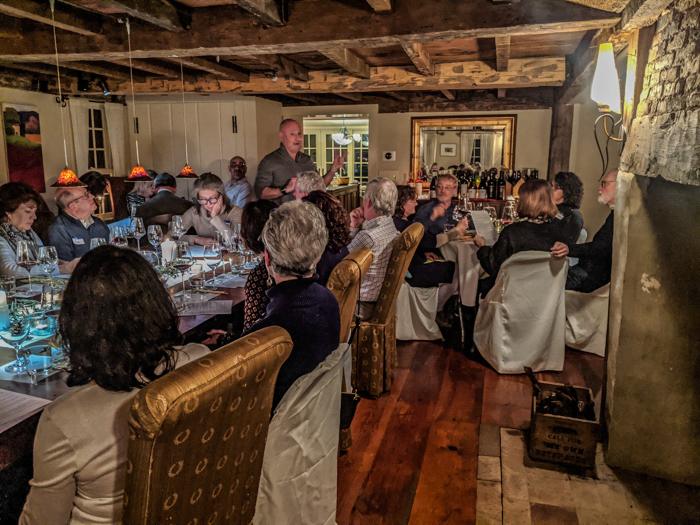
In January, our Newburyport Wine Club welcomed Silvestro Silvestori from the Awaiting Table Cooking School in Lecce as a guest chef and Sommelier. Lecce is in the southern region of Puglia, the heel of the boot. I had traveled down to Puglia in September to explore, and was eager to learn more about the regional foods and wines. I had missed the opportunity to cook with Silvestro then, but he was visiting the US for the holidays and he graciously agreed to visit our Wine Club during his visit. My colleague Gary Sullivan hunted down some fantastic wines from Puglia – not many are imported here yet, so this was a challenge, and Silvestro suggested regional dishes to pair with each. So after missing out in Puglia, my chance to cook with Silvestro came to pass in my own kitchen! Thanks to Karen Shernan of Newburyport Port Plums for connecting us with Silvestro and supplying lots of great olive oil for our evening!
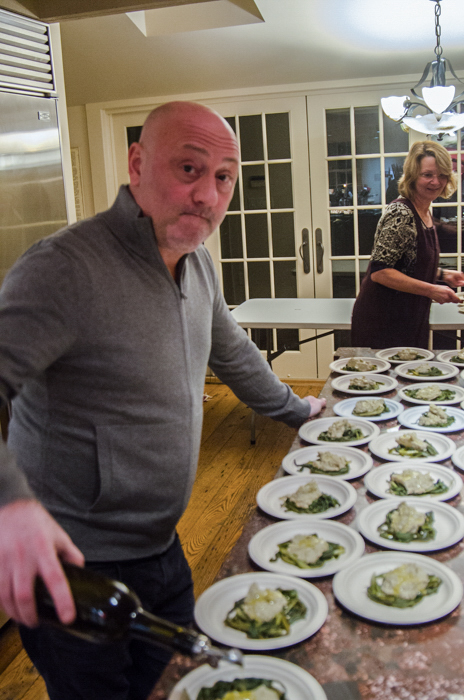
Puglia is one of the few flat areas in Italy, with huge expanses of farmland. It is a region of farmers, producing 40% of Italy’s olive oil. It also a huge producer of durum wheat, which is used in the area’s famous pasta, orecchiette, and breads. As with most regions in the south of Italy, this has been a poorer area, home to cucina povera, the cuisine of the poor. Meat traditionally was reserved for special occasions, with home grown or foraged vegetables taking center stage, and fish and seafood making frequent appearances due to Puglia’s extensive coastline.
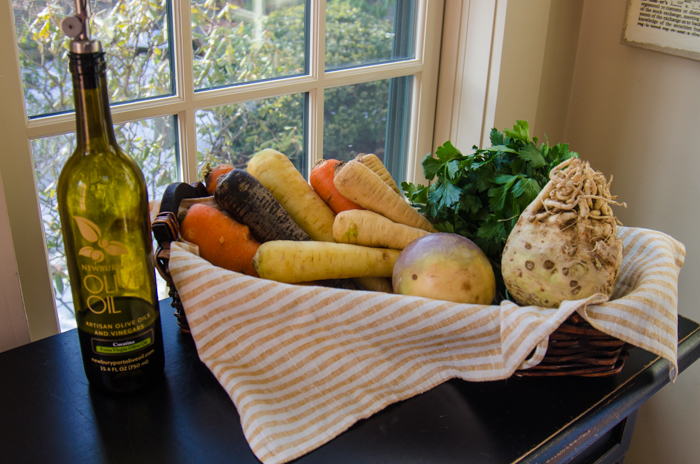
Silvestro suggested two vegetable dishes that we paired with two red wines. Typically white wines are favored with vegetables, but the warm climate of Puglia favors reds. Both of these dishes have enough strong flavors going on to stand up to a red wine; the first uses hearty, spicy wild greens with a dried bean puree, the second an assortment of well-roasted root vegetables. Both require a liberal application of high-quality extra virgin olive oil to finish the dish – preferably Puglian, of course!
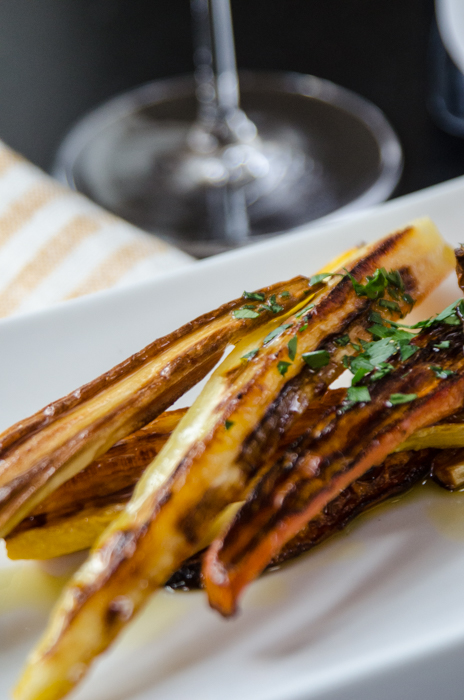
Gary selected the 2015 Leone de Castris Rosso Riserva, Salice Salentino to serve with the Fave e Cicoria, Pureed Fava Beans with Dandelion Greens. This is a blend of 90% Negroamaro and 10% Malvasia Nera di Lecce, both indigenous red grapes. Salice Salentino is one of Puglia’s most successful denominations and one of the first to gain recognition abroad. Intense ruby-red in color, with concentrated aromas of black cherries and baked red fruits complemented with undertones of plum, spice, vanilla and anise. On the palate, velvety tannins and a full body frame the long, delectable finish of stewed strawberries and vanilla beans.
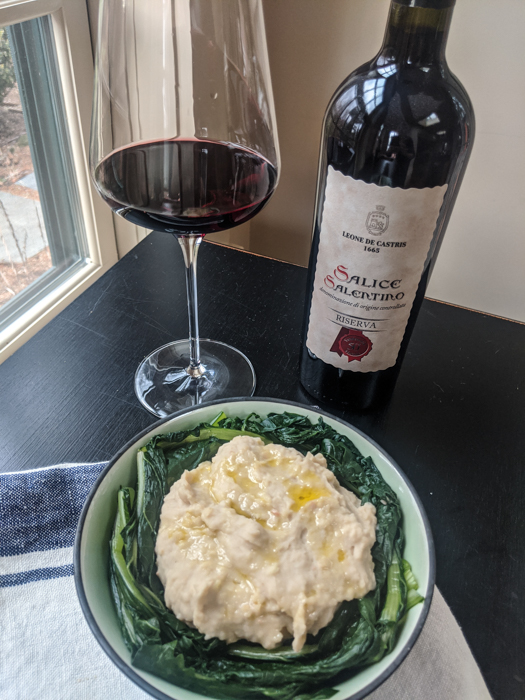
Fava e Cicoria
We made an authentic version of this dish with Silvestro. I purchased dried favas, we first soaked them, then cooked them, then peeled each individual bean; all in all, a very laborious process. We ended up picking through the shelled beans, disposing of many that were too brown to use. We all agreed that using good quality canned white beans would make a better, more attractive puree, and be MUCH easier. So that’s what I used for this recipe.
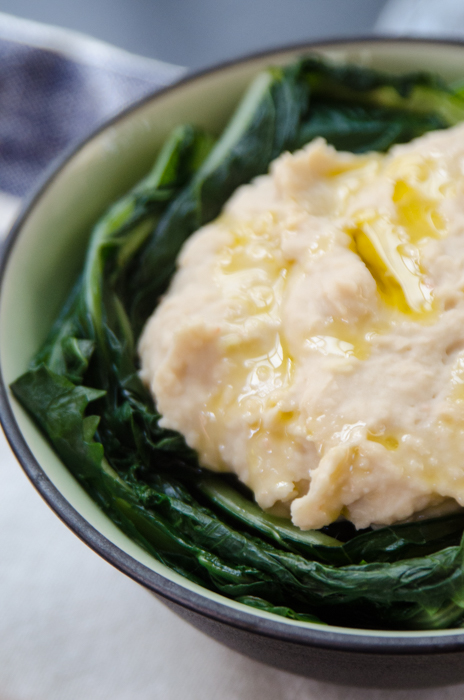
Serves 4
1 – 28 ounce can white beans, such as Cannellini or Lima, rinsed well
2 cloves garlic, minced
Juice of 1 lemon
Extra virgin olive oil
Kosher salt
1 large bunch dandelion greens, washed
Place beans, garlic and lemon juice in the bowl of a food processor and pulse to puree. Add olive oil and pulse until the puree is the consistency your prefer, typically like a hummus. Season to taste with salt.
Bring a large pot of water to s rolling boil over high heat. Add salt until water tastes like sea water. Blanch the greens in the boiling water until the stems are tender to the bite, about 7 minutes. Drain greens.
Place a large spoonful of the bean puree on a plate or in a serving bowl. Surround with a circle of the greens, which Silvestro called “green spaghetti”. Top generously with olive oil and serve.
Pugliese Dark Roasted Root Vegetables
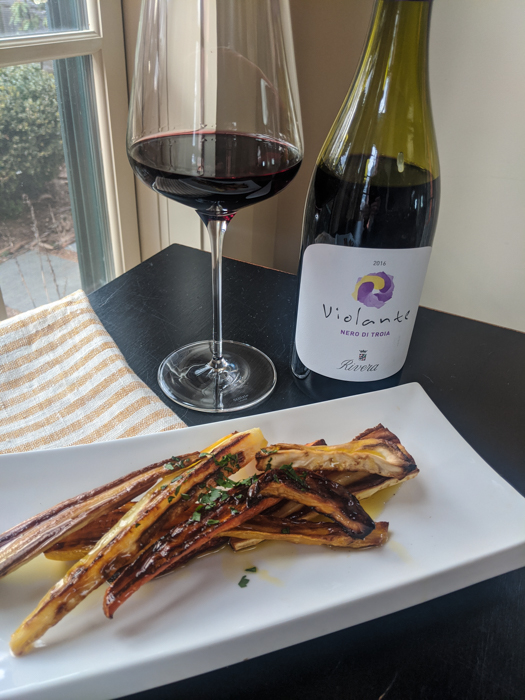
Silvestro described this dish to me a simple roasted root vegetables, cooked until they are “almost burnt”. This resulted in a strongly flavored dish that holds up well against the 2016 Rivera “Violante” Nero di Troia from Castel del Monte. The Rivera estate is located near the town of Andria in the heart of the Castel del Monte DOC. In terms of vineyard area (approx. 1,800 hectares) Nero di Troia, also called Uva di Troia, is the third most important of Puglia’s native black grape vines after Negroamaro and Primitivo. A luminous purple-red with a rich bouquet of wild red berry fruit and sweet violet florals. On the palate, Violante is full-bodied, with a fine balance between fruit and structure.
A mix of your favorite root vegetables – carrots, parsnips, turnip, celery root – washed/peeled
Extra virgin olive oil
Kosher salt and freshly ground pepper
Minced parsley
Preheat oven to 400°F.
Cut root vegetables into larger pieces – carrots in half, or quarter if really large, turnips in 1 inch pieces. If you wish to serve smaller pieces, I suggest roasting first, then cutting into smaller pieces as if they are too small, the dark roasting will result in burnt ends and dried out veggies.
Place vegetables spaced out on a sheet pan, and brush with just a little olive oil. Silvestro instructed me that you use only a little olive oil before cooking, and a LOT after, preserving the flavor. Season with salt and pepper.
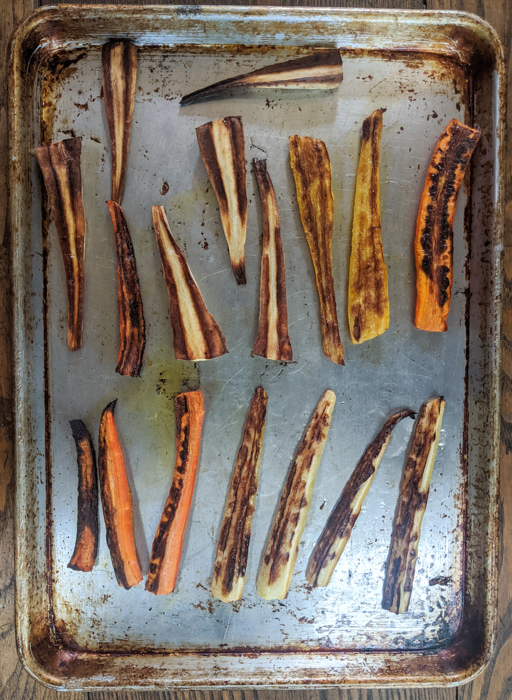
Roast in the oven until very darkly brown, almost burnt, removing and flipping the vegetables once. Keep an eye on them during the roasting process, as some will cook faster than others.
Remove when dark, and serve either warm or at room temperature, drizzled liberally with olive oil and garnished with minced parsley.
